

BUGSWORTH BASINS or “Buggy” to its friends
Bugsworth Basins are the head of navigation of the Peak Forest Canal. They were created to
facilitate the transportation of limestone, lime and gritstone from quarries in Derbyshire to
Manchester and beyond. The initial transportation was by tramway to the basin and then by
canal. The first basin opened in 1796 and, as Bugsworth became a thriving industrial centre, two
more basins were built along with 19 lime kilns. This gave the Basins the capacity to handle over
600 tons of limestone per day and thus become one of the largest inland ports ever created on the
English narrow canal network.
You have to remember that this canal network once extended to over 3000 miles, as compared
with the modern motorway network which is 2025 miles. But all of this gave way to the railways
on a slow decline and in 1927 the Basins were closed.
In 1968 the Inland Waterways Protection Society started an ambitious restoration project and
today that restoration is nearly complete.
Granted the status of a Scheduled Ancient Monument in 1977, The Basin complex and its
associated structures and physical remains are now protected by law under the Ancient
Monuments and Archaeological Areas Act.
As you stand in the midst of this stone built complex it doesn’t take a great deal of imagination
to visualize the intense activity of a facility that had to process and shift 600 tons of rock on a
daily basis. This with the limited mechanization of the times. The trundling wagons of the
tramway, the roar of the lime kilns, dust and smoke and the physical efforts of workers painted
white with lime dust. But in our minds eye all this gradually fades away and we are left with the
peace, the tranquillity and the verdant greenery of this seemingly remote place. You can still
walk the tramway, moor up in the basins and ignore the ghosts. The hills of the Peak District are
all around.
A model and general
views of the facility.
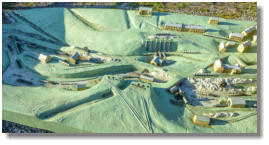

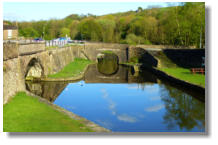
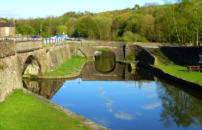
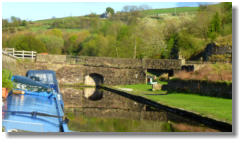
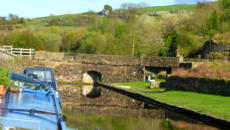
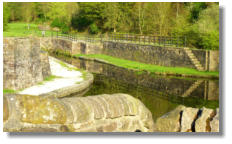
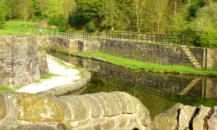


BUGSWORTH BASINS or “Buggy” to its friends
Bugsworth Basins are the head of navigation of the Peak Forest
Canal. They were created to facilitate the transportation of
limestone, lime and gritstone from quarries in Derbyshire to
Manchester and beyond. The initial transportation was by
tramway to the basin and then by canal. The first basin opened in
1796 and, as Bugsworth became a thriving industrial centre, two
more basins were built along with 19 lime kilns. This gave the
Basins the capacity to handle over 600 tons of limestone per day
and thus become one of the largest inland ports ever created on
the English narrow canal network.
You have to remember that this canal network once extended to
over 3000 miles, as compared with the modern motorway network
which is 2025 miles. But all of this gave way to the railways on a
slow decline and in 1927 the Basins were closed.
In 1968 the Inland Waterways Protection Society started an
ambitious restoration project and today that restoration is nearly
complete.
Granted the status of a Scheduled Ancient Monument in 1977,
The Basin complex and its associated structures and physical
remains are now protected by law under the Ancient Monuments
and Archaeological Areas Act.
As you stand in the midst of this stone built complex it doesn’t
take a great deal of imagination to visualize the intense activity of
a facility that had to process and shift 600 tons of rock on a daily
basis. This with the limited mechanization of the times. The
trundling wagons of the tramway, the roar of the lime kilns, dust
and smoke and the physical efforts of workers painted white with
lime dust. But in our minds eye all this gradually fades away and
we are left with the peace, the tranquillity and the verdant
greenery of this seemingly remote place. You can still walk the
tramway, moor up in the basins and ignore the ghosts. The hills of
the Peak District are all around.
A model and
general views
of the facility.


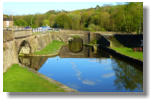

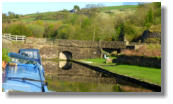

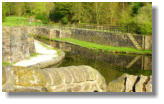


nb Wild Rose

Wandering the Watery Ways…
















